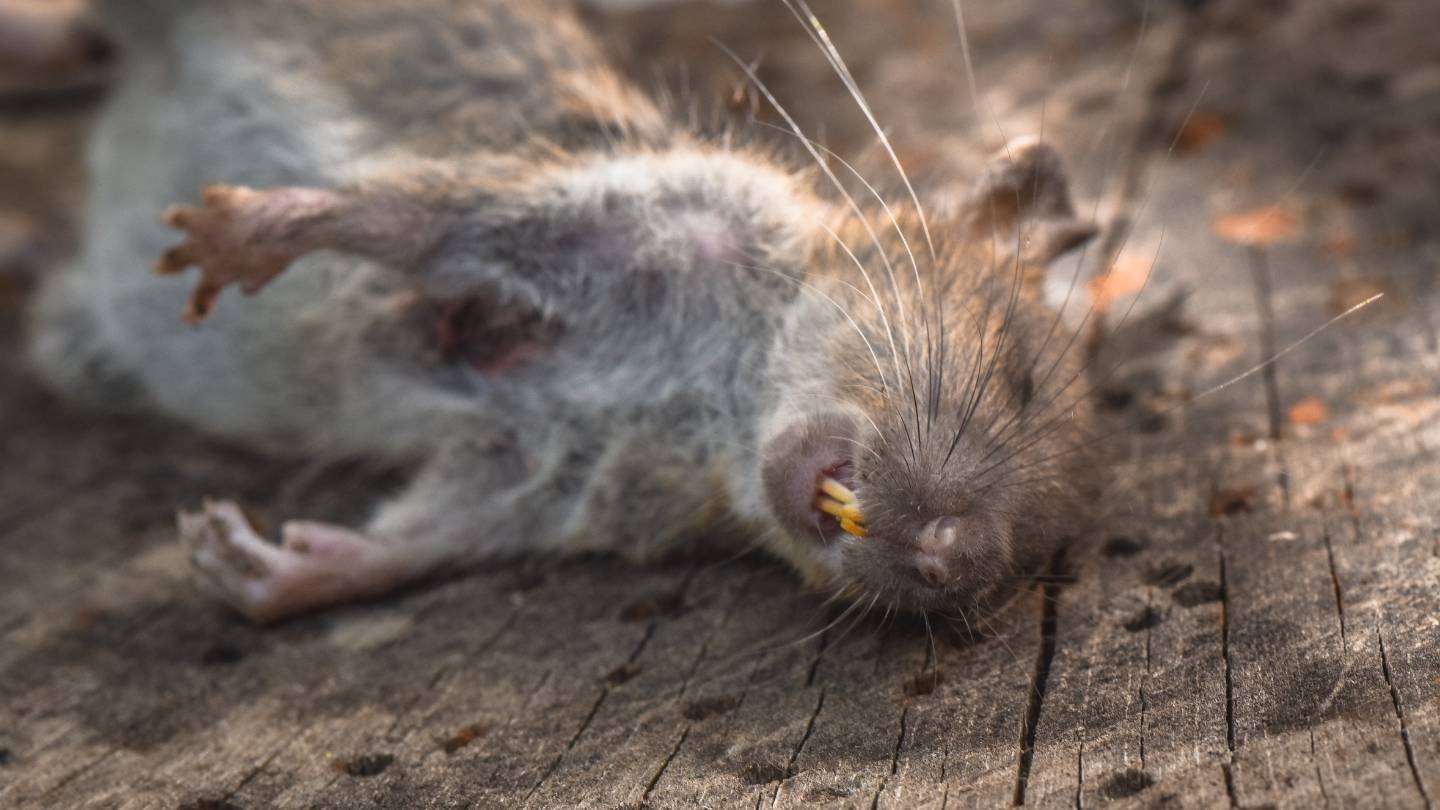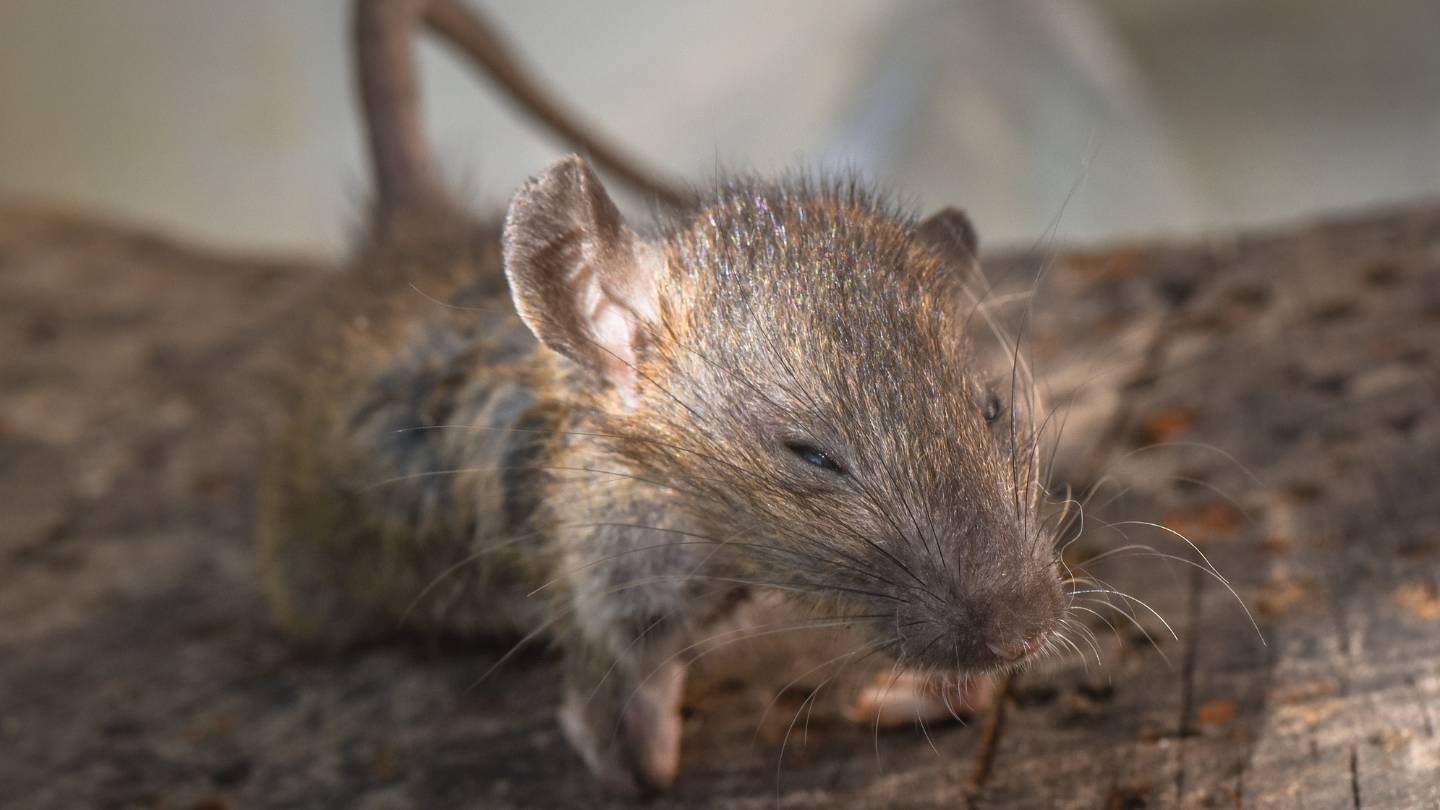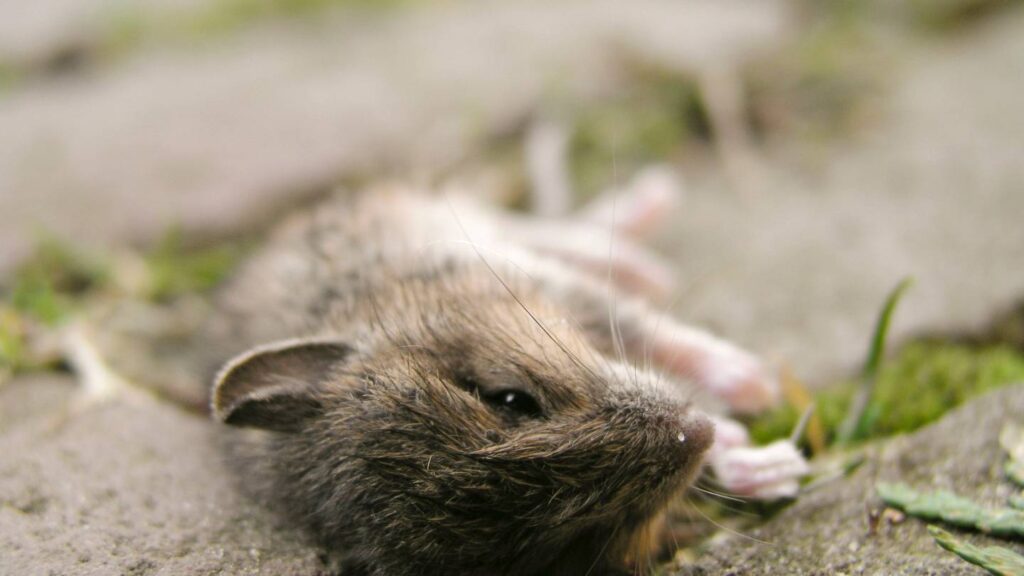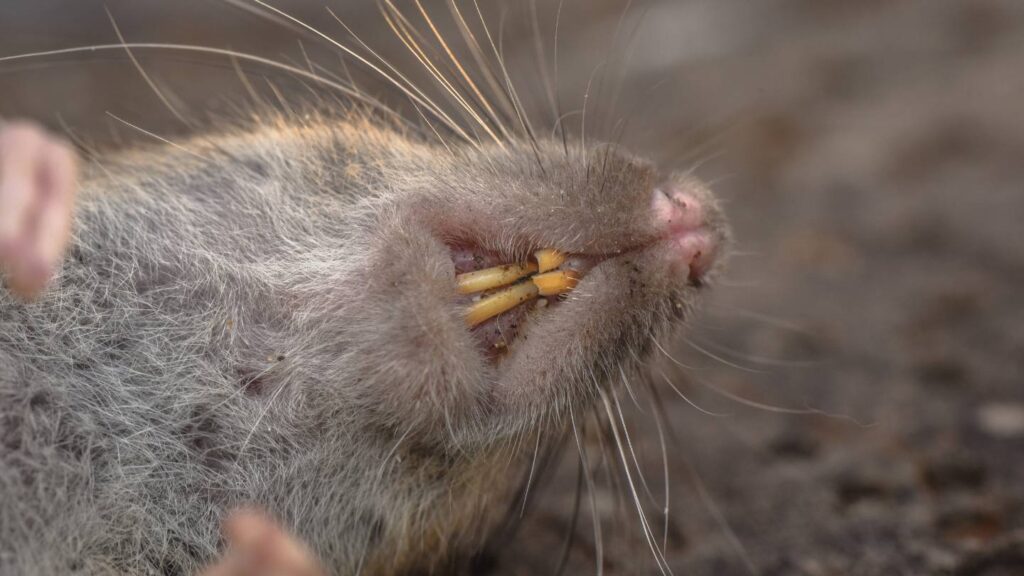Just wait until you smell a dead animal before you judge them by how stinky they are while they're alive. Unfortunately, some creatures can't seem to leave human territory alone, and it's not uncommon for people and animals to have conflicting priorities.
Once an animal has gained access to your land, it is unlikely ever to leave. When it comes to rats, this is an especially big one. A home is a maze for rodents like rats, mice, squirrels, etc.; therefore, if you reside in a region with a high rodent population, you may expect to have to remove a dead animal from your property at some point. To clean up after a dead animal, follow these steps:
Removing Dead Animals From Your Home: A Step-By-Step Diy Guide
Disinfect, Disinfect, Disinfect!
Diseases can be carried by bugs even when they are alive. There are a lot of disease-carrying fleas carried by rabid rodents. Not only does a dead animal attract insects looking for food, but they linger for at least a few hours afterwards.
Wear protective gear such as a mask, eyeglasses, and strong gloves to prevent infection. To avoid contamination, disinfect every equipment you use. You should know that some bacteria can remain on surfaces for several days. Keep your wits about you!

An Additional Layer of Defence: A Brush and Dustpan
Use a tool instead of your bare hands to remove the carcass, even wearing gloves. The fleas that rats bring pose the most threat. Therefore, this is particularly crucial if you are trying to eliminate them. Because they can still creep along the arm, glovesare sometimes thwart fleas. That should be handled with a shovel or a dustpan and brush.
Get Rid of Any Remains of the Dead Body
Ensure the carcass is disposed of properly to prevent the spread of disease. Incineration is the most effective method for this. Having this done professionally is possible at many locations, like the dump, but incineration is a rather simple process if you prefer to do it yourself.
Before burning the carcass, put it in a bag—preferably not plastic, because that will retain too much heat. Use a paper or compostable bag if you can. Hold the bag at a safe distance from the fire, and make sure the carcass is completely burned.
Sanitise All Surfaces
Return to where you initially discovered the carcass once you've removed it. This area needs to be handled appropriately because it is likely polluted. Use steel wool or a sponge coated with soap to remove any animal remnants.
Still, gloves are a must. Lastly, give the area a quick disinfectant spray and let it sit for a few hours to ensure no hazardous bacteria are left. Before you finish your do-it-yourself animal eradication, wash your hands and any tools you use.
Determine The Situation And Eliminate Any Remaining Signs
Inspecting the area and eliminating any remnants of the deceased animal before beginning the cleansing process is critical. Contamination and disease transmission could result from neglecting to do so.
Put the removed animal parts in a plastic bag after carefully removing them with a shovel or scoop while wearing protective gloves. Be cautious not to move or disseminate any substances that could cause injury.
The next step is to use soap and water to wash the area completely, carefully removing any obvious signs of biological fluids such as blood. To ensure no germs or viruses are left behind, apply a disinfectant solution to clean the area.
Removing and replacing these objects may be necessary to guarantee full cleanliness for surfaces that are not easily cleaned or disinfected, such as soil or porous materials.
Sanitisers and Measures for Security
Pick a disinfectant that has been tested and found effective against the kind of germs or viruses that the deceased animal could have carried. Wear safety gear like goggles and gloves, and always follow the manufacturer's directions when working with the solution.
The disinfectant solution and other cleaning supplies should be disposed of correctly because they could be biohazardous. For information on proper disposal methods, contact your regional waste management agency.
If you take the time to inspect the area and get rid of any signs of the deceased animal, you can ensure that the outdoors is safe for your family to enjoy.
Deodorise and Sanitise the Yard
Once the carcass has been removed and any debris disposed of, the yard must be deodorised and disinfected to remove any lingering bacteria or smell. This is a must-do to keep the outdoors safe and clean for your family.
Start by rinsing the entire yard with water and targeting the spots where the animal was lying. If there are any remnants of blood, faeces, or urine, use a powerful water jet to wash them away.
To disinfect, use one part bleach with nine parts water after cleaning and drying. Avoid getting the solution on your skin or lungs using protective gloves and a mask.
Cover the damaged area with the solution using a garden sprayer or spray bottle. Before you wash off the disinfectant with water, let it stay for ten to fifteen minutes.
Use a deodorising product, like baking soda or white vinegar, to eliminate any lingering smell. After a few hours of sitting, sweep or vacuum the area generously sprinkled with baking soda.
You might also use a spray bottle filled with white vinegar and water equal parts each. Spray the affected region with this mixture. It would help if you waited half an hour after adding the solution before washing it with water.
To eliminate the smell, you may need to disinfect and deodorise again.
Dispose of Waste Materials Correctly
To guarantee safe removal, taking the required measures before disposing of waste items following dead animal disposal is critical. After the sanitation process, any leftover dead animal parts or cleaning supplies should be handled with the utmost care because they are biohazardous items.
When disposing of biohazardous trash, the bags must be double-sealed to avoid any potential leaking. Use heavy-duty garbage bags to keep the bags from ripping or puncturing while in transit.
Contact the local hazardous waste facilities to know how to dispose of your trash correctly. Make sure to enquire with your neighbourhood's waste management agency about any biohazardous material kerbside pickup programs that may be available.
Biohazardous products should never be disposed of in the trash or recycling bins. In addition to being dangerous to the health of waste management workers, improper disposal of this material can negatively affect the environment.
When dealing with biohazardous items, you must always use protective gear, such as gloves, to ensure their safe removal. The well-being of people and the environment depends on the correct disposal of trash.
Wash and disinfect any tools and equipment used in the yard.
A clean and safe outdoor area can be achieved by sanitising yard tools and equipment before using them. Listed below are a few pointers for properly sanitising tools and equipment.
Wear Protective Gear
Before sanitising anything to avoid spreading germs and chemicals, put on your protective gear—gloves and a mask.
Remove Debris And Dirt
First, clean the tools and equipment by sweeping away any dust, filth, or organic material. You can use a hose or a brush to remove the dirt and debris.
Disinfect The Equipment And Tools
Thoroughly sanitise the equipment and tools using a disinfectant solution. Bleach, hydrogen peroxide, and rubbing alcohol are just a few commercially available disinfectants. Dissolve the disinfectant in water according to the label's directions.
Scrub And Rinse
Inspect every crevice and nook of the tools and equipment before giving them a good scrub with the disinfecting solution. After you scrub the tools and equipment, rinse them with water to eliminate any remaining disinfectant solution.
Dry The Equipment And Tools
After rinsing, let the tools and equipment air dry entirely. To avoid any potential contamination from dirt or moisture, keep them in a dry and clean place.
After each usage, disinfect your yard tools and equipment to avoid contamination. In addition to improving the aesthetic value of your home, a well-kept yard can also keep you and your family safe from harmful outside elements.
Methods For Eliminating Animal Smells After Their Removal
Finding and eliminating the offending organism alone will eliminate a significant portion of the odour. However, fluids can be left behind, which would add to the odour.
Ventilate The Space
To eliminate the stench:
- Open all the nearby windows.
- If the smell comes from a vehicle or a garage, open the doors to let more air in.
- For indoor use, install a ceiling fan and place box fans or portable fans on opposite walls to circulate air; one will draw in fresh air from outside, and the other will expel stale air.
Rinse the Outside Areas and Garage Floor with Water
To remove the odour from a cement floor, paved driveway, or other washable outdoor surface, hose down the affected area.
Clean Using a Disinfectant
For disinfection purposes, wash a hard surface floor with a cleaner that is appropriate for the surface. For example, you can use a cleaner with a pine or lemon aroma on cement floors or movable surfaces.
Getting Your Carpets and Upholstery Spotless
The best way to clean carpets, automobile upholstery, and rugs is by using an enzymatic cleaner made specifically for these materials. A different method involves mixing two cups of warm water with one tablespoon of liquid dish soap. Soak a sponge or gentle cloth in water to stop the infection from spreading, and wipe the area from outside to inside.
Use Vinegar for Cleaning and Odour Elimination
After soaking for a few minutes with equal parts white vinegar and water, dry the area with a lint-free cloth. Vinegar is safe to use on most hard surfaces, including carpets, furniture, and even some naturally soft stones like marble. As an antiseptic and deodoriser, vinegar is a useful tool.
Cleaning Different Spaces
Cottages, Barns, and Other Outbuildings
Prepare
- Before cleaning, let the room take 30 minutes to breathe by opening all the windows and doors. During this period, you should leave the area.
- Check for signs of rodents by returning to the area.
- Slip on a pair of plastic or rubber gloves.
Clean
- Remove any evidence of rodents, including their droppings, nests, and urine.
- Apply disinfectant to the hard surfaces or spray the dirt floors of the outbuilding.
- Put the exposed insulation into plastic bags and dispose of it if it is infected with urine or droppings.
- Use disinfectant to cleanse inanimate objects like counters, cupboards, and storage compartments.
- Do the same with any additional surfaces or objects that require disinfection.
- Take any containers or storage bins containing potentially harmful substances outside to a sunny, well-ventilated spot.
- Take everything outside that could be a source of contamination and dispose of it. Stay upwind to avoid having dust or debris blown directly into your face.
- Throw away anything that isn't needed anymore.
- Use bleach or disinfectant to clean and sanitise nonporous or hard objects. Follow the instructions as with other materials, such as cloth and paper.
- Get rid of any cardboard cartons that have been soiled with pee or poop. A disinfectant or bleach solution can clean glass, plastic, or metal containers.
- When you're done using gloves, wash your hands with water and soap or a disinfectant.
- After removing your gloves, wash your hands thoroughly with soap and warm water. If you don't have soap on your hands or dirty hands, you can also use a waterless alcohol-based hand massage.
Air Ducts (Heating And Cooling Ventilation Systems)
When rodents are discovered to have gained access to HVAC systems, the best course of action is to call a professional rodent extermination company. The hazards and complications caused by rodent infestations in ventilation systems are well-known to duct cleaning companies.
Vehicles
Vehicles such as trucks, cars, campers, and others can become nesting grounds for rodents, particularly if they are rarely usedsparingly. Inspect and clean your car to stop the spread of diseases carried by rodents. If you need help, talk to an expert mechanic or vehicle technician.
Keep the car in a well-ventilated area while you search for signs of rodents, such as droppings, nests, or bodies, and then clean and disinfect it.

Inspect
To let 20 minutes of fresh air into the cabin and engine compartment, open the vehicle's hood, doors, and trunk. (Before starting a car sitting for a long time, make sure the tyres are inflated and check the air intake and filters.) Take a look inside the car. Disconnect the battery wires before checking the engine compartment to avoid electric shock. Wearing long-sleeved shirts and plastic gloves is a must.
Detect
Look for signs of rodents, such as their droppings, urine, or nesting materials. Get all the cleaning tools you'll need to disinfect and clean.
Disinfect
- Roach, droppings, or otherwise contaminated surfaces should not be vacuumed or sprayed with a high-pressure water jet until cleaned.
- Once materials are well saturated, spray them with a disinfectant and allow them to sit for 5 minutes or as directed on the package.
- To pick up the items, use a paper towel. Then, put the rubbish in the garbage. Please take out the air filter and any nesting materials in the intake system and throw them away. After installing the new filter, be sure to close the device.
- Once you have eliminated the rat droppings and nesting materials, use more disinfectant to clean the remaining space.
- When it's dry, reconnect the battery.
- When you're done using gloves, wash your hands with water and soap or a disinfectant. After removing your gloves, wash your hands thoroughly with warm water and soap.
Avoid the colonisation of vehicles in the future. Ductwork, rusty spots, and cable conduit are entry points for rodents into the passenger compartment. To keep rats out of your car, set up snap traps and bait them with poison. To keep rats out of your vehicle, never put food out in any form.
Conclusion
It is important to deodorise and disinfect the yard after getting rid of a dead animal to get rid of any germs or smell that might still be there. Spray water all over the yard, paying special attention to the spots where the animal was laying. Use protective clothes and a mask to clean up the area by mixing one part bleach with nine parts water.
Cover the hurt area with the mixture and wait ten to fifteen minutes. To get rid of any smell that is still there, use a deodorising product like baking soda or white vinegar. After a few hours, give the area a good sweep or vacuum and spray it with vinegar or baking soda. Use double-sealed bags and heavy-duty garbage bags to properly dispose of trash.
For kerbside pickup programmes for biohazardous materials, contact your local hazardous waste sites and waste management agencies. Before you use yard tools and equipment, you should wash and cleanse them by putting on safety gear, cleaning them with disinfectant solutions, scrubbing and rinsing them, and letting them dry completely.
To keep them from getting dirty, disinfect yard tools and equipment every time you use them. A well-kept yard not only makes your house look better, but it also keeps you and your family safe from outside dangers.
You can get rid of animal smells by finding and killing the organism that is causing them. Open windows, put up fans, and wipe down outdoor areas with water to get rid of smells. Clean surfaces with the right cleaners, like ones that smell like pine or lemon. An enzymatic cleaner or a mixture of warm water and liquid dish soap can be used to clean rugs and furniture without leaving any marks. Vinegar is a safe and effective way to clean and get rid of smells.
To clean different areas like cottages, barns, and sheds, you have to get them ready, look for signs of rodents, and use disinfectant on dirty floors and hard surfaces. Use plastic bags to throw away exposed insulation, and take buckets or storage bins outside to be thrown away. Clean hard or nonporous things with bleach or detergent, and throw away dirty cardboard boxes.
When rodents get into HVAC systems (Heating, Ventilation, and Air Conditioning), they should be put out through the air pipes. Rodents can make nests in vehicles, so check them out and clean them to stop the spread of disease. Before you check the engine, disconnect the battery lines and put on long-sleeved shirts and plastic gloves.
To find rodents, look for their droppings, urine, or nesting materials, and clean any areas that you come across. Throw away things the right way; get rid of air filters and nesting materials, and change filters after putting in new ones. Use disinfectant and disinfectants to clean up the rest of the room.
Set up snap traps with poison as bait to keep rodents from moving in, and never leave any kind of food out in your car.
Content Summary
- Discovering a dead animal in your house can lead to unpleasant odours and the need for prompt cleanup.
- Rodents like rats, mice, and squirrels may invade human territory, posing challenges for homeowners.
- Rodents, especially rats, are likely to stay in a home once they gain access, making removal necessary.
- A maze-like environment makes homes attractive to rodents, and dead animals may need removal.
- Disease-carrying fleas from rodents can pose health risks, even after the animals have died.
- Protective gear, including a mask, eyeglasses, and strong gloves, is essential during dead animal cleanup.
- Use a brush and dustpan or a shovel to handle the carcass, avoiding direct contact.
- Proper disposal of the dead body is crucial to prevent disease spread, with incineration being an effective method.
- Disinfect all surfaces to eliminate potential bacteria and pathogens left by the dead animal.
- Inspect the area and eliminate any remaining signs of the deceased animal before cleaning.
- Biohazardous waste, including dead animal parts and cleaning supplies, must be handled with care during disposal.
- Sanitise yard tools and equipment after each use to prevent contamination and ensure a clean outdoor environment.
- Ventilate the space by opening windows and doors to eliminate odours from the dead animal.
- Rinse outdoor areas and garage floors with water to remove any remaining biological fluids.
- Disinfect hard surfaces with an appropriate cleaner and use enzymatic cleaners for carpets and upholstery.
- Use vinegar for cleaning and odour elimination, as it is safe for most hard surfaces.
- Properly clean cottages, barns, and outbuildings by removing evidence of rodents and disinfecting surfaces.
- Sanitise air ducts in heating and cooling ventilation systems to prevent the spread of contaminants.
- Inspect vehicles for signs of rodent infestation, and clean and disinfect them if necessary.
- Wear protective gear while inspecting and cleaning vehicles to avoid direct contact with contaminants.
- Dispose of biohazardous waste correctly to prevent harm to waste management workers and the environment.
- Wash and disinfect tools and equipment used in the yard after each use to maintain cleanliness.
- A well-kept yard not only enhances aesthetics but also contributes to the safety of the household.
- Use proper disinfectants and follow safety measures when cleaning and sanitising yard tools and equipment.
- Eliminate odours by ventilating spaces, cleaning with appropriate solutions, and using deodorising products.
- Rinse and disinfect outdoor areas to remove any lingering bacteria or odours after dead animal removal.
- Dispose of waste materials correctly to ensure safe removal and prevent harm to the environment.
- Contact local waste management agencies for information on proper disposal methods for biohazardous materials.
- Sanitise yard tools thoroughly to avoid contamination and maintain a clean outdoor space.
- Regularly clean and disinfect yard tools to ensure they are safe for use and do not pose a health risk.
- Properly dispose of waste items following dead animal removal, taking necessary precautions during handling.
- Use heavy-duty garbage bags and double-seal them to prevent leakage when disposing of biohazardous waste.
- Ensure the proper disposal of cleaning supplies used in dead animal cleanup to avoid environmental harm.
- Sanitise and disinfect yard tools with appropriate solutions to prevent the spread of germs and chemicals.
- Wear protective gear, including gloves and a mask, when sanitising tools and equipment in the yard.
- Remove debris and dirt from yard tools before disinfecting them to achieve thorough cleanliness.
- Use disinfectant solutions such as bleach or hydrogen peroxide to sanitise yard tools effectively.
- Scrub and rinse tools after disinfection to remove any remaining disinfectant solution.
- Allow tools and equipment to air dry completely in a clean and dry area to avoid contamination.
- Use enzymatic cleaners designed for specific materials to clean carpets, upholstery, and rugs effectively.
- Mix equal parts white vinegar and water for cleaning hard surfaces and eliminating odours.
- Rinse and dry areas after using vinegar or enzymatic cleaners to complete the cleaning process.
- Ventilate spaces by opening windows and doors to promote fresh air circulation.
- Use fans to circulate air, especially in confined spaces, to aid in odour elimination.
- Rinse outdoor areas with water to remove any remnants of blood, faeces, or urine after dead animal removal.
- Use bleach and water to disinfect outdoor spaces thoroughly, following safety precautions.
- Deodorise yards with products like baking soda or white vinegar to eliminate lingering smells.
- Sweep or vacuum areas treated with deodorising products to remove any residues and complete the cleaning process.
- Dispose of waste materials correctly to prevent environmental harm and ensure safe removal.
- Wear protective gear and follow safety measures when cleaning and disinfecting tools and equipment in the yard.
Frequently Asked Questions
Use enzymatic cleaners or vinegar and water to neutralise the smell. Ventilate the area by opening windows or using fans.
Yes, exposure to bacteria, viruses, and parasites carried by the carcass can pose health risks. Proper precautions are crucial.
Regularly inspect and seal entry points, keep food sealed, and maintain cleanliness to discourage pests from entering.
The smell can persist for several days. Proper cleaning and airing out the area can help dissipate the odour faster.
If you need clarification or are uncomfortable with the cleanup process, professionals experienced in biohazard cleanup can ensure safe and thorough removal.







